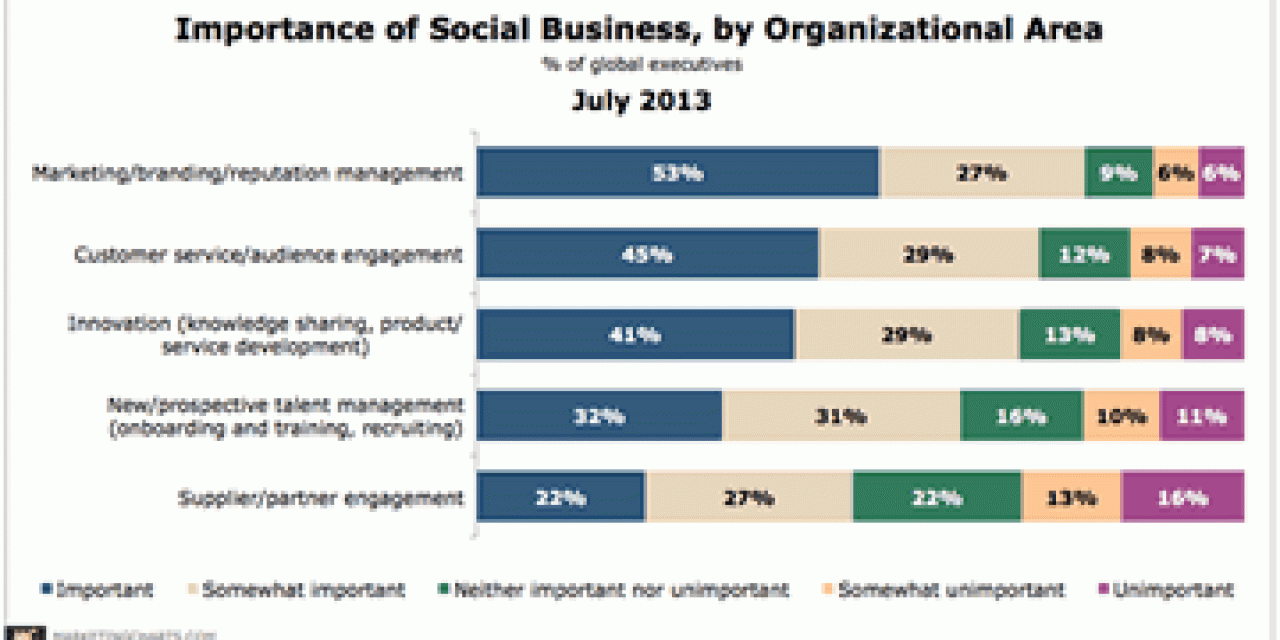Social business and the use of social media and technologies for marketing (social media marketing) both still have a long way to go, certainly regarding maturity, integration, processes and ROI. However, at the same time the speed of ‘social’ adoption and of the social/digital reality outpaces the speed of organizational adaptation. Managers need to start understanding social business and social media in general right now as they get behind in an era of digitization, digital transformation, consumerization and real-time connected business.
Social media and technologies impact the way people inform themselves, buy, consume media, work, communicate and do business; social business. However, the adoption of social media and social technologies is happening at very different paces. That’s an important challenge for every organization. And the time to get started is now.
Towards and beyond an integrated social business view
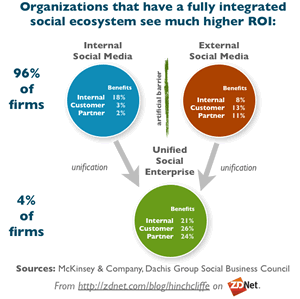
Consumers are adopting social technologies ‘en masse’. Some businesses are already beyond the stages of “just” social media marketing and are introducing the technologies, principles and processes underlying ‘social’ across all business processes. For just a handful, social business is an obvious reality with an integrated social/digital business approach in place as required in this era of ongoing digitalization (that soon will just be an obvious part of business as such).
Such an integrated view is essential in all regards. Social media marketing needs to be included in an integrated marketing strategy revolving around the customer experience. However, social business, of which social media marketing is a piece, needs to be integrated as well. One of the reasons: as Dion Hinchcliffe wrote early 2013 and as illustrated with the graphic above, organizations with a fully integrated social ecosystem see much higher ROI.
Yet, others still are figuring out what social media can do or don’t consider it at all. The same gaps exist regarding the inevitable evolutions of processes, business rules and forms of collaboration and information management in a social business context. And in an age where digital technology is pervasive in all areas of the organization and of society, unfortunately there is a huge gap between the speed of business and speed of the digital reality. So it’s time to catch up and get started and connect the dots in social and far beyond.
Why getting started with social business and social media now?
In this online guide to social business and social media we take a look at several evolutions and dimensions of social in both a marketing and overall business context. Furthermore, managers and executives who want to close the gap between the tools they and their customers use in a social space, can find more information about specific channels (even if those don’t matter first) and tactics in the social business and social media marketing space. The main reasons to get started obviously are business and consumer behavior reasons. But there’s more.
Social business: you ain’t seen nothing yet
Social is not simply an option, it’s a must. People just want it, in private life and in business. However, the term ‘social’ is so vast and vague that it needs to be better understood and put into context. On top of the pure business reasons why social is a must, there are several technological reasons, market evolutions and changes in how we buy/work/shop/connect… , all with their impact on business and marketing.
While the focus of thought leaders in the technology and business space is shifting from social media (marketing) to social business, the truth is that most businesses are not ready for more advanced forms of social business yet. When we look at the actual usage of social technologies, the first social business applications, such as social collaboration, are still in relatively early stages. Gartner’s social technology Hype Cycle shows it’s clear that many technologies are just starting to reach the so-called ‘slope of enlightenment’ or ‘plateau of productivity’ now. However, things go fast and, depending on the market, line of business and industry, our customers in the broadest sense are rapidly becoming more mature in their use of social media, as are businesses in using social media.
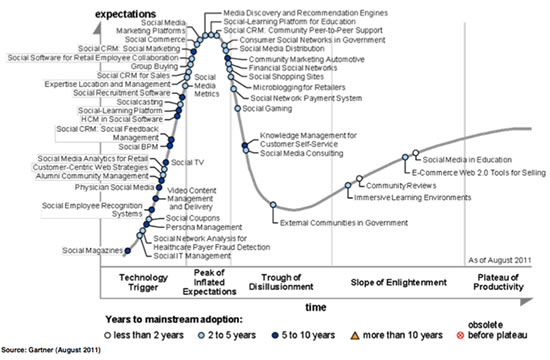
Gartner’s 2013 hype cycle for social software below clearly shows how social analytics, social content software and even social media metrics platform have not gone through the trough of disillusionment stage yet (and that there are again new categories popping up and making the landscape and opportunities more interesting).
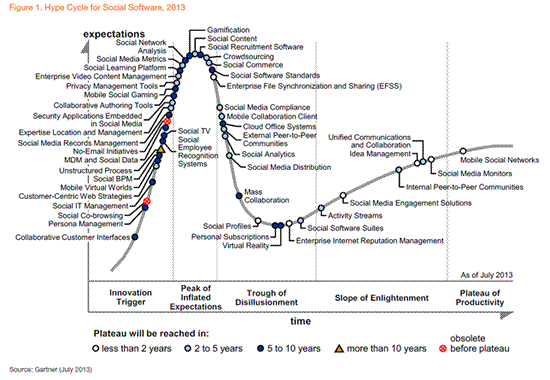
And it’s not a secret that, when it boils down to social business, organizations are still lagging behind in numerous areas, not in the last regarding integration, processes and new ways of working.
Although social technologies from a business perspective are still mainly used in a marketing business function context, social is extending its’ reach across the enterprise and its’ ecosystem. In its annual social business study, Deloitte and the MIT Sloan Management Review looked at a wide range of social business uses as they happen today. The survey confirmed that social business is still mainly important in marketing but it’s clear that other business functions will follow (and are following soon).
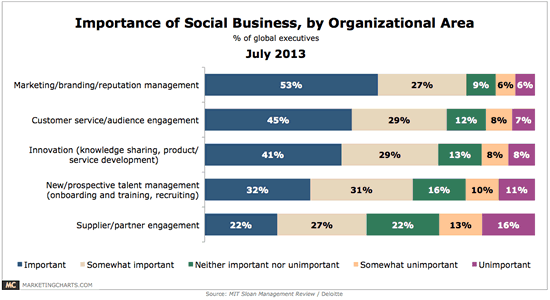
However, many areas of social business are a fact as you read this in several leading companies, certainly in the area of collaboration and an integration of service, data, marketing, etc. If you don’t know how social technologies impact your business and work now, you ignore the reality of your customers, employees and competitors.
Social media marketing: the really important steps are still to be taken
Social media marketing is probably one of the areas where you will want to have a more relevant and integrated view and understanding first. When looking at digital marketing, the context in which social media is best known (social media marketing) and is generally considered to be most mature, you’ll notice there is still a lot coming your way and consumer reality changes fast. If you’re not prepared by understanding the shifts and even platforms now, it will get harder to catch up with the speed of the digital and social market reality.
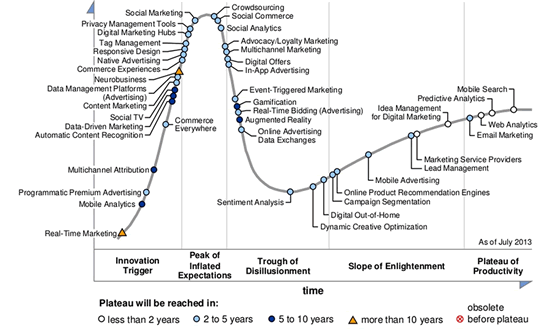
The growth of social is just starting to happen – and it changes all the time
Social media and technologies have been adopted at an unseen pace. With new social technologies and platforms, again being adopted in record time across 2013, social has a lot of room for growth and Gartner’s hype cycles are further illustrations of that room for growth.
However, this is not related to specific social channels since the user adoption and shifts in consumer behavior are always on the move. In 2013, for instance, we saw a huge shift in the social preferences of teens, moving away from Facebook and going to Twitter and social networks most of us hadn’t hear of in 2012. The landscape changes but the adoption of social media and technologies overall is just beginning to grow in many business areas.
Time to catch up with the social media and social business reality
Even with regional and demographic differences, it’s obvious ever more people show a connected buying, information gathering and consumption behavior whereby the overall experience takes center stage. We don’t need numbers to see social media is big. Furthermore, it is related with the explosion of the amount of data (Big Data) and content (content marketing) that is available to both consumers and business. Just look around you or check any popular social media site and the amount of content that is created every single second.
From a marketing perspective, for instance, Gartner mentions content marketing, social analytics and ROI as next focal points in social marketing. The link between social media marketing and content marketing is obvious. As a matter of fact all these tactics such as inbound marketing, social media marketing and content marketing overlap as in the end, they are all umbrella terms with content marketing being probably the major umbrella term nowadays. The link between social content, social signals, social analytics and Big Data are clear as well.
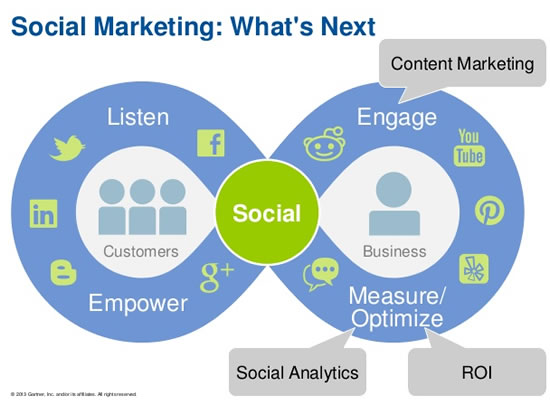
Again, it’s really time to catch up and get an integrated understanding. As said, there is a huge gap between the adoption by social technologies by consumers and by businesses. Organizations increasingly understand they have to be where there – prospective – customers are and what the consequences can be if they are not. This means that an increasing number of managers are learning how to use social platforms as well. And that’s just the start as in the end it’s always about purpose, people and processes first and platforms next.
Social business and social media marketing: it is now and tomorrow, regardless of all the messages you hear about ‘it is over’. But it is connected, far more than you were led to believe.
